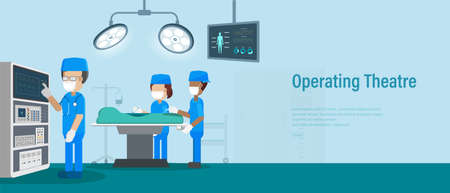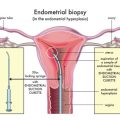1. Introduction to Multidisciplinary Teams in COPD Care
Chronic obstructive pulmonary disease (COPD) is a long-term lung condition that can seriously affect a person’s daily life. In the United States, COPD care is most effective when handled by a team of different healthcare professionals working together—this is known as a multidisciplinary team. These teams bring together experts from various medical fields to ensure that patients receive well-rounded and personalized care.
How Are Multidisciplinary Teams Structured in the U.S.?
In American healthcare settings, multidisciplinary teams are carefully organized so that each professional focuses on their area of expertise while collaborating closely with others. This approach helps address the many aspects of COPD, including physical symptoms, emotional well-being, nutrition, and daily functioning. Here’s a look at the typical structure:
| Team Member | Role in COPD Rehabilitation |
|---|---|
| Pulmonologist | Diagnoses and manages lung-related issues |
| Primary Care Physician | Oversees overall health and coordinates referrals |
| Respiratory Therapist | Teaches breathing techniques and manages oxygen therapy |
| Physical Therapist | Guides exercise programs to improve strength and endurance |
| Occupational Therapist | Helps with daily activities and energy conservation strategies |
| Dietitian/Nutritionist | Provides advice on healthy eating to support lung health |
| Mental Health Professional | Supports coping with anxiety or depression related to COPD |
| Nurse or Nurse Practitioner | Monitors symptoms and educates patients about self-care |
| Social Worker/Case Manager | Assists with community resources and insurance navigation |
The Importance of Teamwork in Managing COPD
COPD affects more than just the lungs—it impacts a person’s entire lifestyle. That’s why a team approach is so valuable. Each team member plays a unique part in helping patients breathe easier, stay active, eat well, manage medications, and handle emotional challenges. By working together, these professionals help people living with COPD achieve better health outcomes and maintain their independence for as long as possible.
2. Key Members and Their Roles
In a COPD rehabilitation program, a multidisciplinary team works together to provide the best possible care for patients. Each professional brings their own expertise to help manage symptoms, improve quality of life, and support overall health. Here’s a simple breakdown of the core team members and what each one does in COPD rehab.
Pulmonologists
Pulmonologists are doctors who specialize in lung health. They lead the medical management of COPD, diagnose the condition, monitor disease progression, adjust medications, and oversee the entire rehab process to make sure treatments are safe and effective.
Respiratory Therapists
Respiratory therapists work closely with patients to teach them how to use inhalers and other breathing devices properly. They guide breathing exercises, administer oxygen therapy if needed, and provide education on managing breathlessness during daily activities.
Nurses
Nurses coordinate patient care and serve as the main point of contact for questions or concerns. They monitor vital signs, help with medication management, offer health education, and support both patients and their families throughout the rehab journey.
Physical Therapists
Physical therapists design personalized exercise programs that help build strength, endurance, and flexibility. They teach safe ways to move and conserve energy, making it easier for people with COPD to stay active in their daily lives.
Dietitians
Dietitians create nutrition plans tailored to the specific needs of people living with COPD. They address challenges like unintentional weight loss or gain, suggest foods that support lung health, and teach strategies for maintaining a healthy diet despite breathing difficulties.
Social Workers
Social workers support emotional well-being by connecting patients and their families with community resources, counseling services, and financial aid if needed. They help navigate insurance questions and can assist with transportation or home care arrangements.
Team Member Roles Overview
| Team Member | Main Role in COPD Rehab |
|---|---|
| Pulmonologist | Leads diagnosis & treatment; oversees medical care |
| Respiratory Therapist | Teaches breathing techniques; manages oxygen therapy |
| Nurse | Coordinates care; provides education & support |
| Physical Therapist | Develops exercise plans; improves mobility & strength |
| Dietitian | Offers nutrition counseling; tailors meal plans |
| Social Worker | Connects with resources; provides emotional support |
This collaborative approach ensures that every aspect of a patient’s health is considered—medical, physical, nutritional, emotional, and social—helping people with COPD live fuller and more independent lives.

3. Collaboration and Communication in Rehabilitation
In American COPD rehabilitation programs, collaboration and communication are at the heart of successful patient care. Multidisciplinary teams—usually including doctors, respiratory therapists, physical therapists, occupational therapists, nurses, dietitians, and social workers—work together to develop personalized plans that address the unique needs of each person with COPD.
Team-Based Coordination
Each specialist brings their own expertise to the table. For example, doctors focus on medical management, while physical therapists design exercise routines that help patients breathe easier and move better. Nurses often act as a bridge between different team members and the patient. Social workers help patients access community resources or support systems.
Roles of Team Members in COPD Rehab Programs
| Team Member | Main Responsibility |
|---|---|
| Doctor (Pulmonologist) | Medical assessment and treatment planning |
| Respiratory Therapist | Breathing techniques and equipment training |
| Physical Therapist | Exercise programs for strength and endurance |
| Occupational Therapist | Daily living skills and energy conservation strategies |
| Nurse | Education, monitoring, and care coordination |
| Dietitian | Nutritional advice for better lung health |
| Social Worker | Community resource connections and emotional support |
Effective Communication Strategies
American rehab teams use several key strategies to keep everyone on the same page:
- Regular Team Meetings: Weekly or biweekly meetings allow all team members to discuss patient progress, adjust goals, and solve problems together.
- Electronic Health Records (EHR): These digital records make it easy for every provider to see updates on medications, therapy notes, or test results in real time.
- Patient-Centered Huddles: Short daily check-ins that include both staff and patients help clarify goals for the day and answer questions quickly.
- Cultural Sensitivity Training: Teams are trained to communicate in ways that respect individual backgrounds and preferences—very important in America’s diverse communities.
Integrated Planning for Patient-Centered Care
The goal is always to put the patient first. American rehab teams work closely with each person to set realistic goals—like being able to walk further without shortness of breath or managing symptoms at home. Plans are regularly reviewed so they can be adjusted if a patient’s condition changes or new challenges arise. By using clear communication and teamwork, these programs help people with COPD feel more in control of their health.
4. Benefits of a Multidisciplinary Approach for Patients
Why Multidisciplinary Teams Make a Difference in COPD Rehab
When it comes to chronic obstructive pulmonary disease (COPD) rehabilitation, having a multidisciplinary team isn’t just a fancy idea—it’s proven to work. These teams bring together experts like doctors, nurses, respiratory therapists, physical therapists, dietitians, and social workers. Each professional brings their own skills and knowledge to help patients manage their condition more effectively. This approach is very common in the United States because it helps people feel better, avoid hospital stays, and get the support they need throughout their journey.
Evidence-Based Outcomes: What the Research Shows
Research from top medical journals and real-world programs across the U.S. has shown that when patients with COPD join rehab programs led by multidisciplinary teams, they see significant improvements in several important areas:
| Outcome | Multidisciplinary Team Impact |
|---|---|
| Quality of Life | Patients report feeling more energetic and less anxious about their breathing issues. They’re better able to handle daily activities thanks to personalized exercise plans, nutrition advice, and emotional support. |
| Hospital Readmissions | There’s a clear drop in the number of times patients need to go back to the hospital for COPD-related problems. Early intervention from the team helps spot potential issues before they turn into emergencies. |
| Patient Satisfaction | Most patients say they feel heard and cared for when multiple specialists are involved. They appreciate having a whole team working with them, not just a single provider. |
A Real-Life Example: How It Works in Practice
Imagine a patient named John who recently joined a COPD rehab program at his local hospital in Texas. He meets regularly with his physical therapist for exercise sessions, gets diet tips from a registered dietitian, checks in with his nurse about medications, and talks with a social worker about coping strategies. Because John’s team communicates often and shares updates about his progress, he stays out of the emergency room and feels confident managing his symptoms at home.
The Takeaway: Better Together
The evidence is clear—multidisciplinary teams make COPD rehabilitation more effective. Patients don’t just survive; they thrive when surrounded by specialists who work together to address every aspect of their health.
5. Challenges and Future Directions in the U.S.
Common Barriers Facing Multidisciplinary COPD Rehab Teams
While multidisciplinary teams are essential for effective COPD rehabilitation, several obstacles can make it tough for these programs to reach their full potential in the United States. Here’s a breakdown of some of the most common barriers:
| Barrier | Description | Impact |
|---|---|---|
| Insurance Limitations | Many insurance plans do not fully cover pulmonary rehab or only approve a limited number of sessions. | Patients may stop rehab early or avoid enrolling due to cost. |
| Team Coordination Hurdles | Healthcare providers often work in different locations or systems, making communication tough. | Care plans might not be consistent, and patients can feel confused about who to trust. |
| Diverse Patient Needs | COPD affects people differently based on age, culture, language, and socioeconomic status. | Programs may not always fit everyone’s unique needs, reducing their effectiveness. |
Opportunities for Strengthening Multidisciplinary COPD Rehab Programs
Despite these challenges, there are promising ways to improve multidisciplinary rehabilitation for people living with COPD in the U.S.:
1. Expanding Insurance Coverage
- Pushing for policy changes that recognize the long-term benefits and cost savings of comprehensive pulmonary rehab programs could help more patients access care without financial stress.
- Educating insurers about the value of including all key team members—like respiratory therapists, dietitians, social workers, and mental health professionals—can help broaden what’s covered.
2. Improving Team Communication and Collaboration
- Using shared electronic health records (EHRs) helps keep everyone—from doctors to physical therapists—on the same page about each patient’s plan.
- Regular team meetings, even virtual ones, support better coordination and help address patient concerns faster.
3. Customizing Care for Diverse Populations
- Creating culturally sensitive materials and offering services in multiple languages makes rehab more accessible and welcoming.
- Flexible scheduling, telehealth options, and community outreach can help reach patients who face transportation or time barriers.
The Road Ahead
Tackling these challenges will take teamwork from healthcare providers, payers, policymakers, and patients themselves. By addressing insurance limitations, improving team coordination, and tailoring care to diverse populations, multidisciplinary COPD rehab programs in America can become even stronger and more effective for those who need them most.

